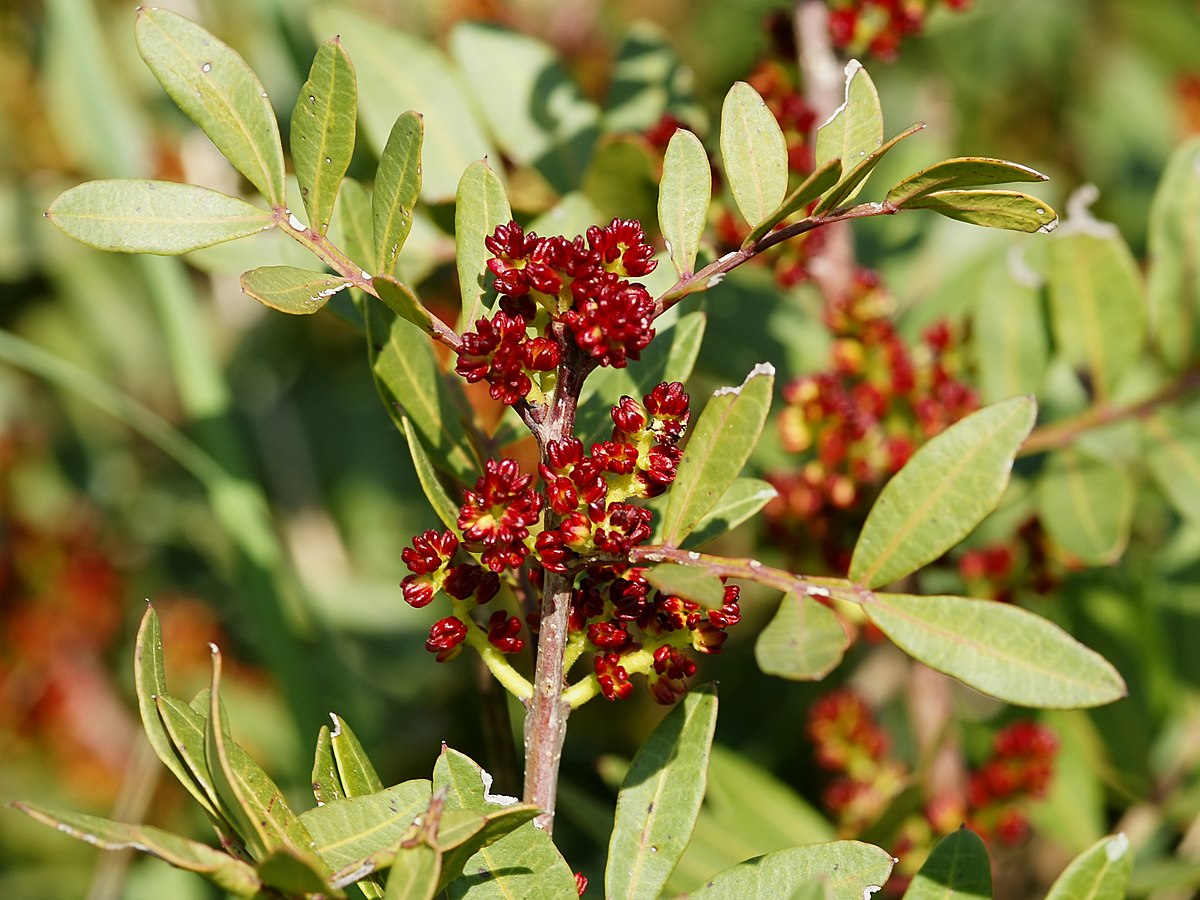Pistache
(Pistacia)

Description
Pistacia plants are shrubs and small trees growing to 5-15 m tall. The leaves are alternate, pinnately compound, and can be either evergreen or deciduous depending on species. All species are dioecious, but monoecious individuals of Pistacia atlantica have been noted.The genus is estimated to be about 80 million years old. It is a genus of flowering plants belonging to the family Anacardiaceae. The plants are dioecious, have male and female trees independently; a viable population should have both genders. Well-known species in the genus Pistacia include P. vera, the pistachio, grown for its edible seeds; P. terebinthus, from which terebinth resin, a turpentine, is produced; P. lentiscus, source of the plant resin mastic; and P. chinensis, the Chinese pistache, cultivated as an ornamental tree. The Pistacia species are vicarious Anacardiaceae with few species outside the Old World, and are mostly more adapted to water shortage and alkaline soil. Many plant species are adapted to desert or summer drought typical of Mediterranean climate, so have a high tolerance to saline soil. They grow well in water containing up to 3.0 to 4.0% of soluble salts.They are quite resilient in their ecological requirements, and can survive in temperatures ranging from -10 -C in winter to 45 -C in summer. They prefer places oriented toward the sun and well-drained soil, but grow well in the bottom of ravines. Though very hardy and drought resistance, Pistacia species grow slowly and only begin to bear fruit after about seven to 10 years from planting, obtaining full development only after 15 to 20 years. The fruit ripens in the Mediterranean from August; only female trees have fruit.
Taxonomic tree:







